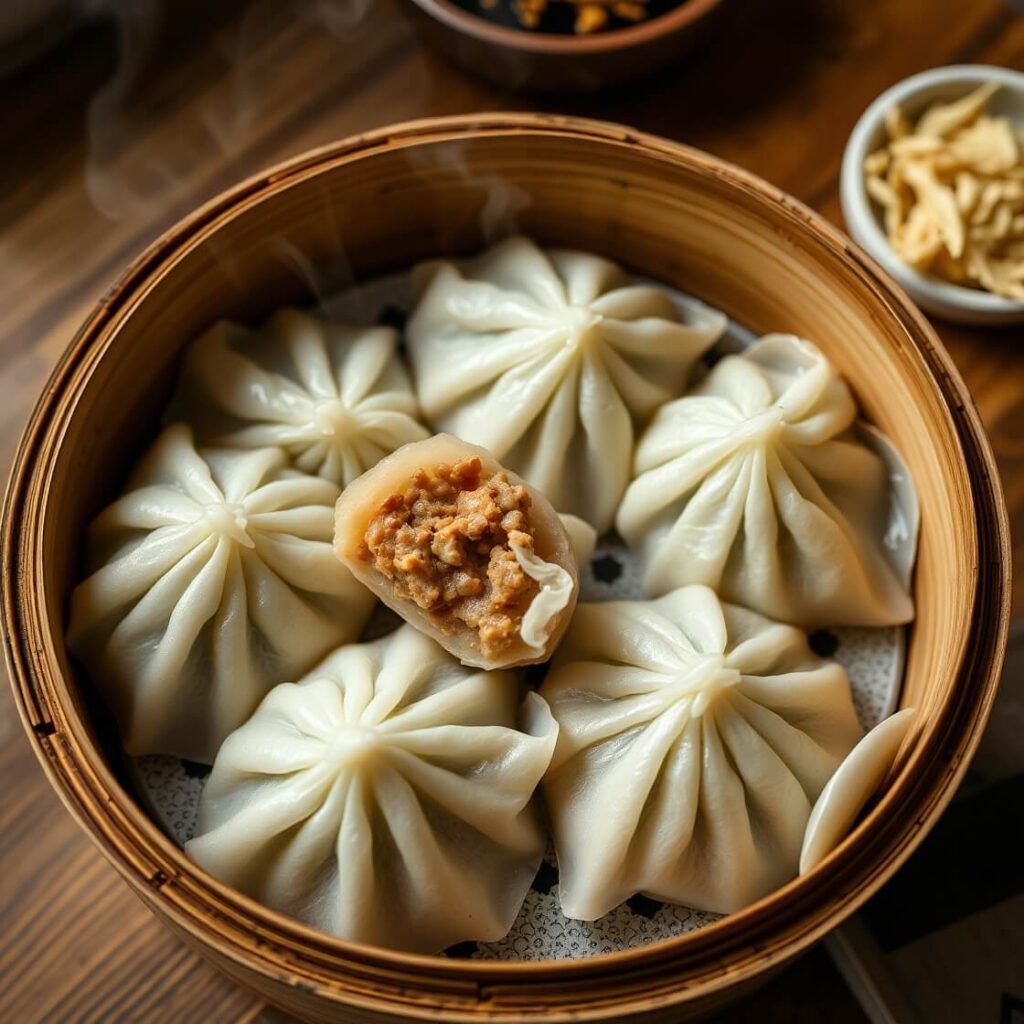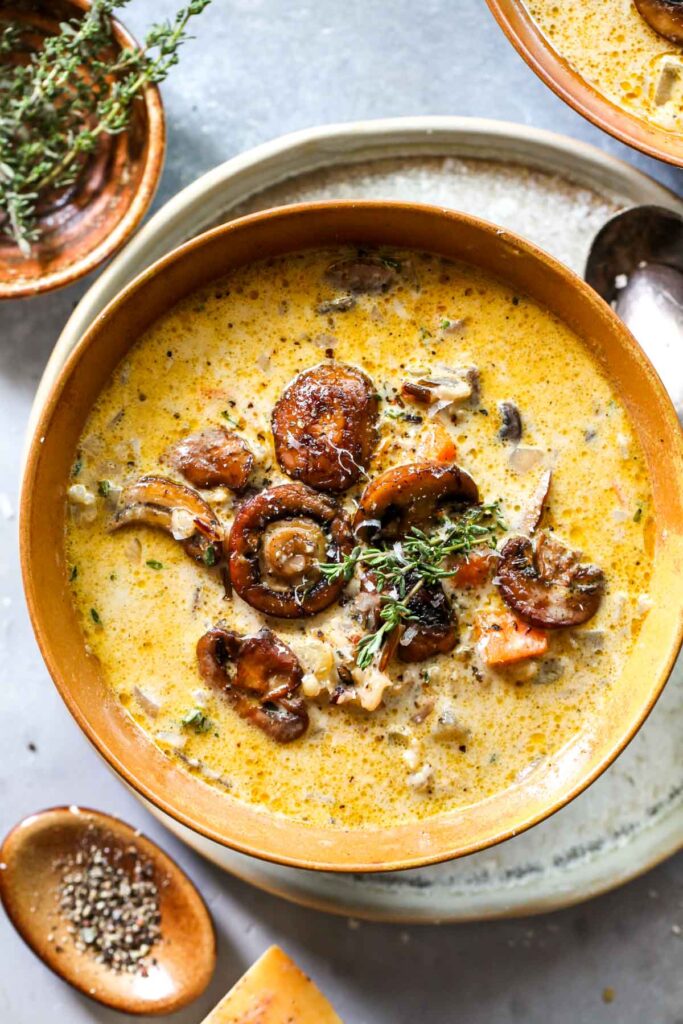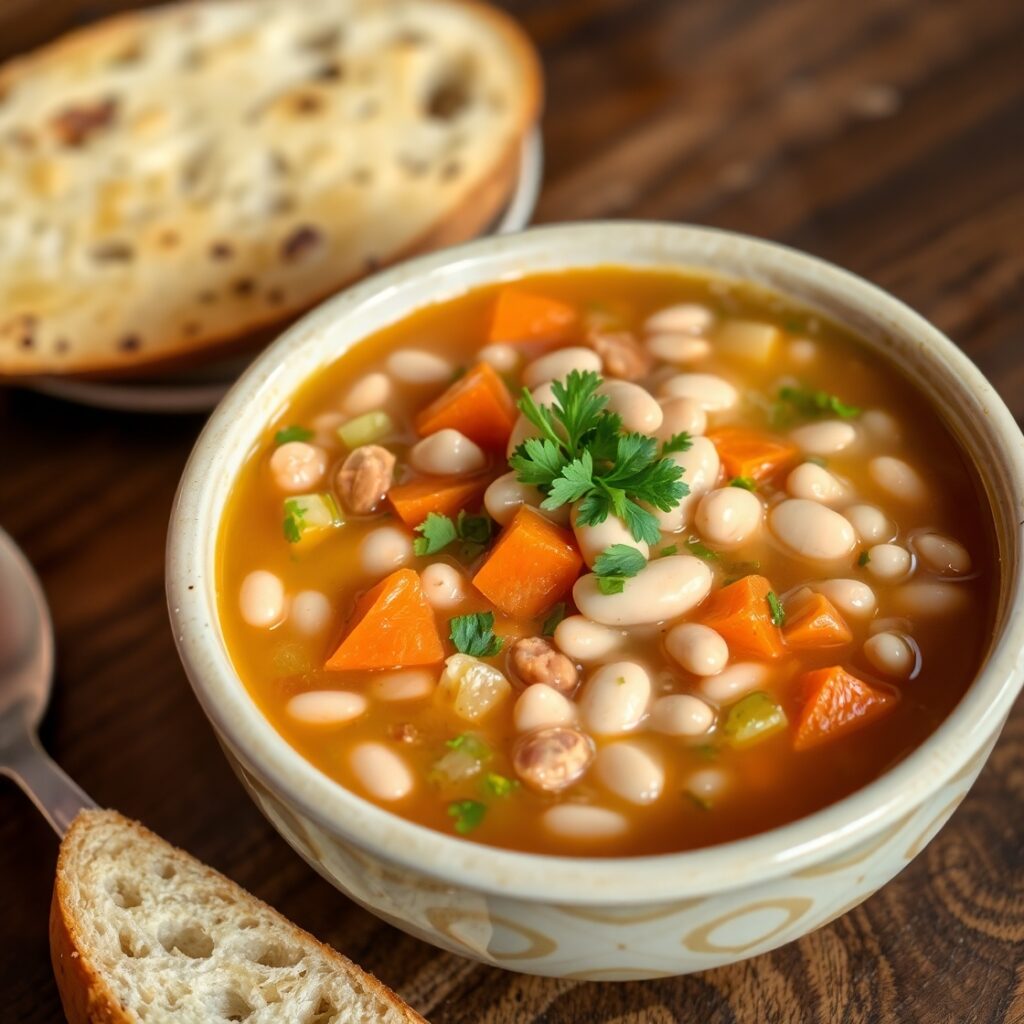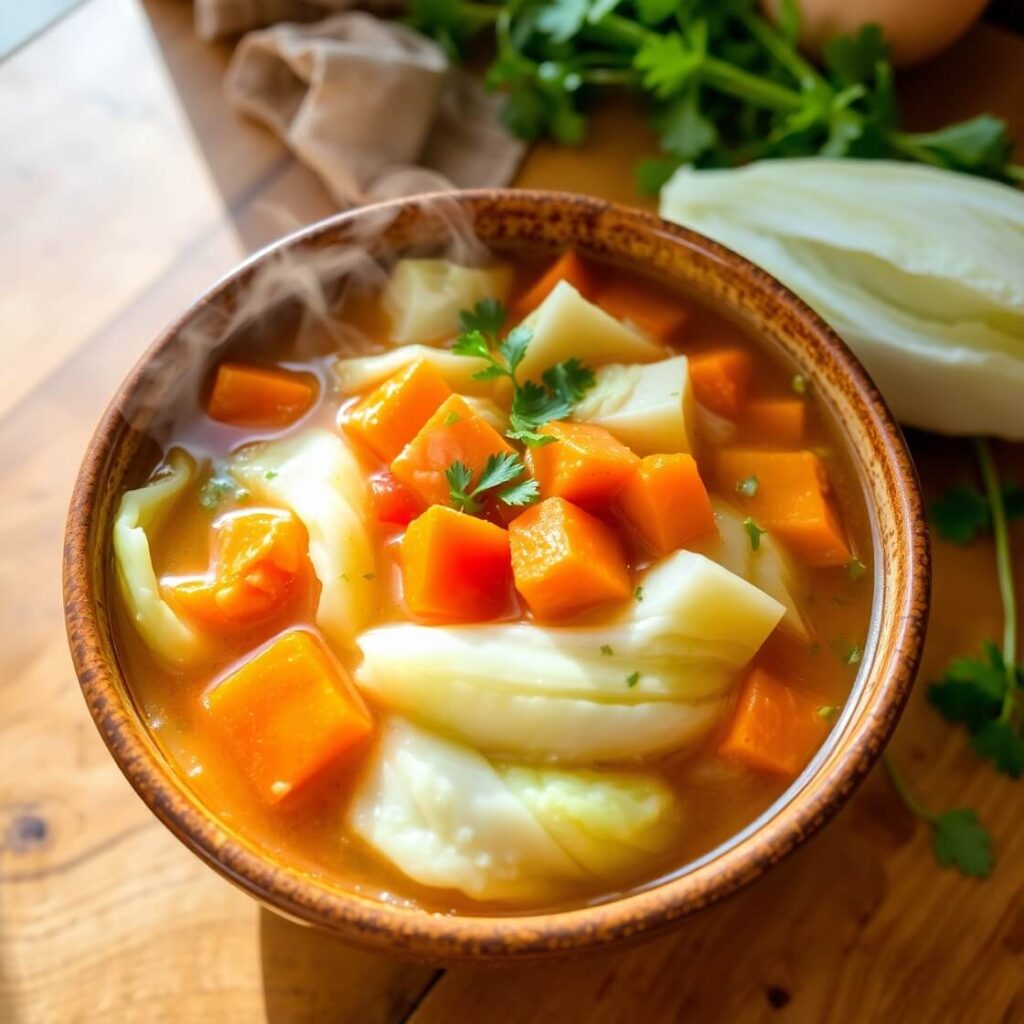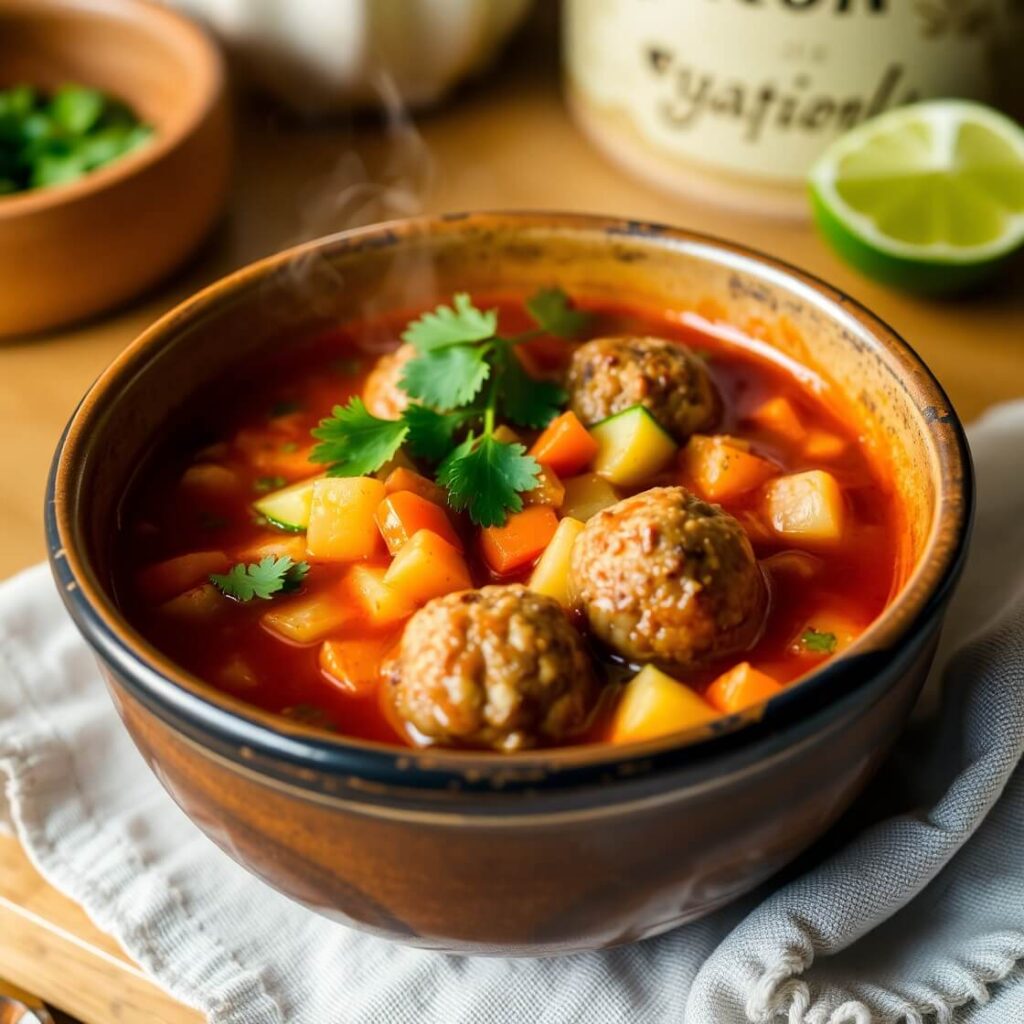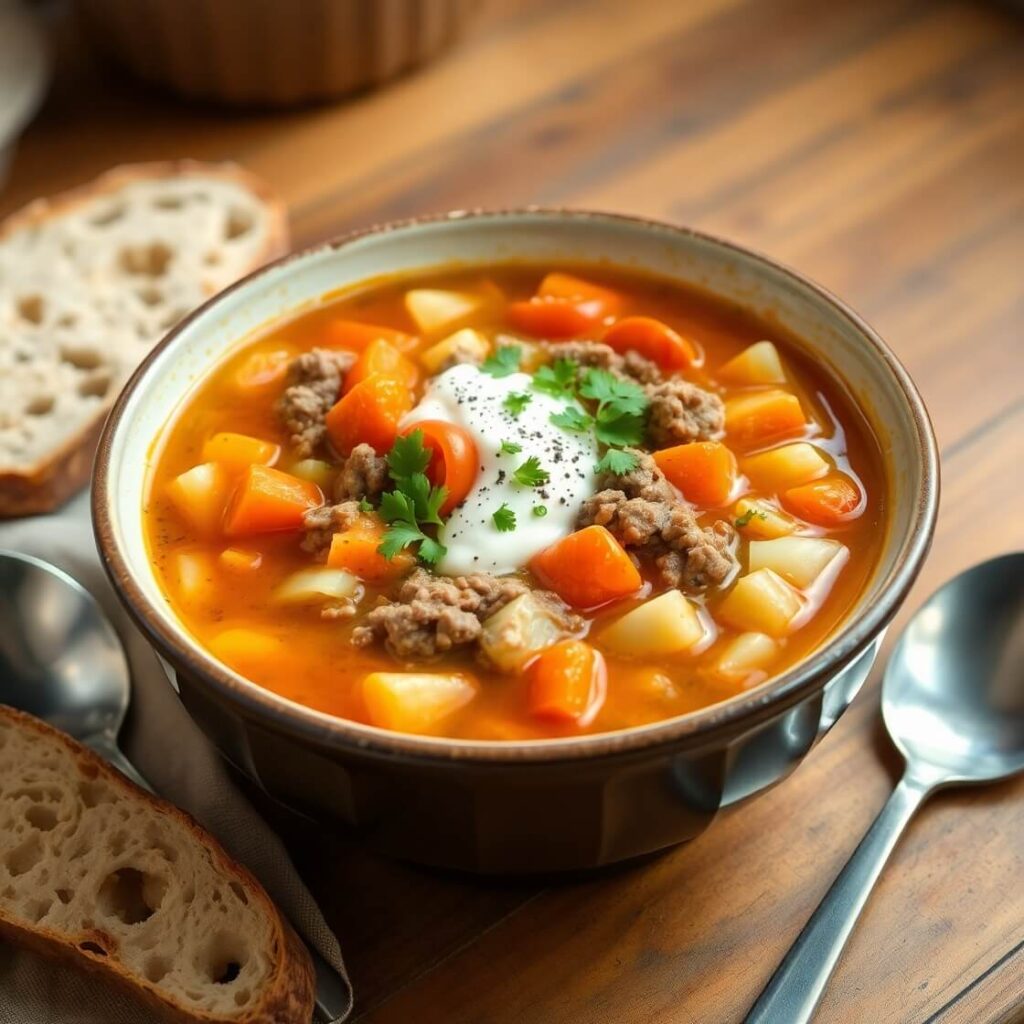Soup Dumplings
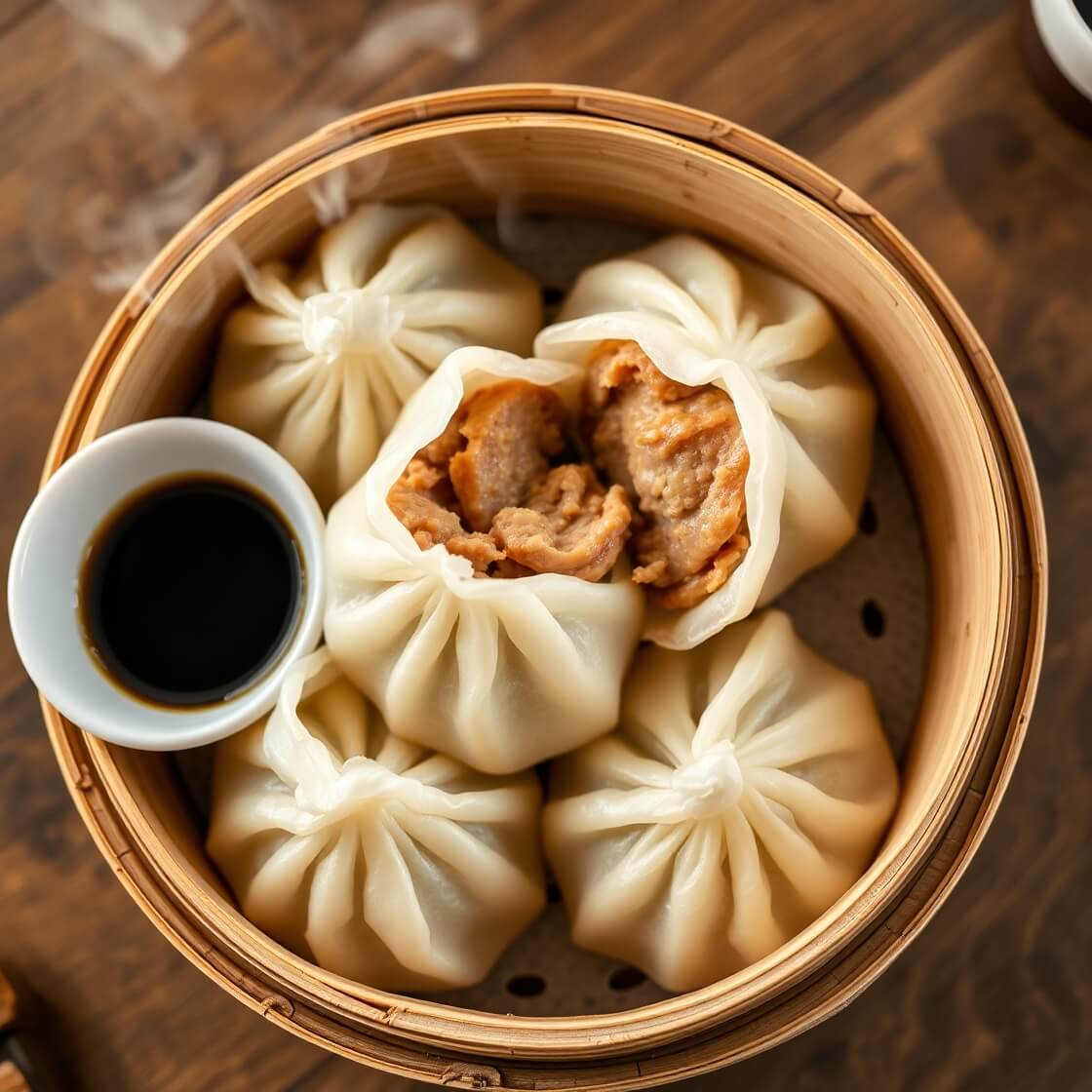
I still remember the first time I tried making peach dumplings—it was midsummer, and the peaches at the farmers’ market looked like they’d been plucked straight from a dream. Their fuzzy skin glowed in the sun, and the scent alone made me swoon. I carried home a basket heavier than I anticipated, already imagining the warm, tender dumplings my family would devour.
But as often happens in my kitchen adventures, things didn’t go perfectly. I had misjudged the sugar in the syrup and accidentally boiled the dough too long in the first batch. The smell was heavenly, yet the texture left much to be desired. Still, every bite reminded me of why I love this recipe—it’s forgiving, comforting, and a little nostalgic. Each time I make it, I remember that first chaotic, peach-scented afternoon and how the kitchen filled with laughter and sticky hands.
This recipe has become a summer staple in our home. Whether it’s a Sunday treat or a special occasion, it’s guaranteed to bring smiles, some laughter, and maybe a tiny mess in the kitchen. And honestly, that’s part of the fun.
Lessons Learned from My First Batch
Over the years, I’ve discovered a few tricks that make peach dumplings consistently delightful. One of the first lessons was about the dough: overworking it results in tough dumplings, so I learned to knead just until it comes together.
Then there’s the syrup. I once tried cutting corners with low-quality sugar, thinking the peaches themselves would carry the flavor. Big mistake. High-quality, granulated sugar or even a light brown sugar adds depth and enhances the peaches’ natural sweetness. I also learned to watch the boiling process carefully—too high heat can tear the dumplings apart, leaving me with peach mush instead of tender pockets of joy.
And let’s not forget about timing. Peaches have a delicate texture; you don’t want to cook them into oblivion. I now slice them evenly and wrap them gently in the dough, ensuring they soften perfectly in the syrup without collapsing. These small lessons transformed a chaotic first attempt into a dessert that always delivers a tender, juicy bite.
What Makes These Dumplings Shine
The magic of peach dumplings isn’t just in the fruit or dough alone—it’s the way the flavors marry during the cooking process. As the dumplings simmer in a cinnamon-infused syrup, the peaches release their natural juices, blending with a hint of vanilla and butter. The dough absorbs just enough sweetness while staying tender, giving each bite a soft, pillowy texture.
The aroma is just as important as the flavor. When I lift the lid off the simmering pot, the kitchen fills with the scent of ripe peaches, sugar, and a whisper of cinnamon. It’s a smell that instantly evokes summer afternoons and family gatherings, the kind that makes everyone pause and smile before reaching for a spoon.
And then there’s the contrast—slightly caramelized edges on some dumplings, tender peach flesh, and a syrup that’s silky yet clingy enough to coat your spoon. It’s simple, yet it feels indulgent, comforting, and a little like magic.
Ingredients You’ll Want to Seek Out
Peach dumplings are deceptively simple, but the quality of your ingredients makes a world of difference. Here’s my personal take on what to use:
- Ripe Peaches: Look for peaches that yield slightly to gentle pressure and smell fragrant. If you can get freestone peaches, they’re easier to pit and slice.
- Dough: I prefer a homemade dough that’s lightly sweetened. A mix of flour, butter, and a touch of milk creates the perfect tender wrap. You can also experiment with a biscuit-style dough if you like a slightly flaky texture.
- Sugar: Granulated sugar works perfectly for the syrup, but I often add a tablespoon of light brown sugar for a subtle caramel note.
- Cinnamon & Vanilla: Just a hint of cinnamon and a splash of vanilla extract elevate the flavor without overwhelming the peaches.
- Butter: A small pat of unsalted butter in the syrup gives richness and helps the dumplings brown slightly.
Substitutions are flexible—gluten-free flours can work for the dough with minor adjustments, and maple syrup can replace sugar for a deeper, autumnal sweetness. The key is balance: the peaches should remain the star.
Step-by-Step Peach Dumpling Instructions
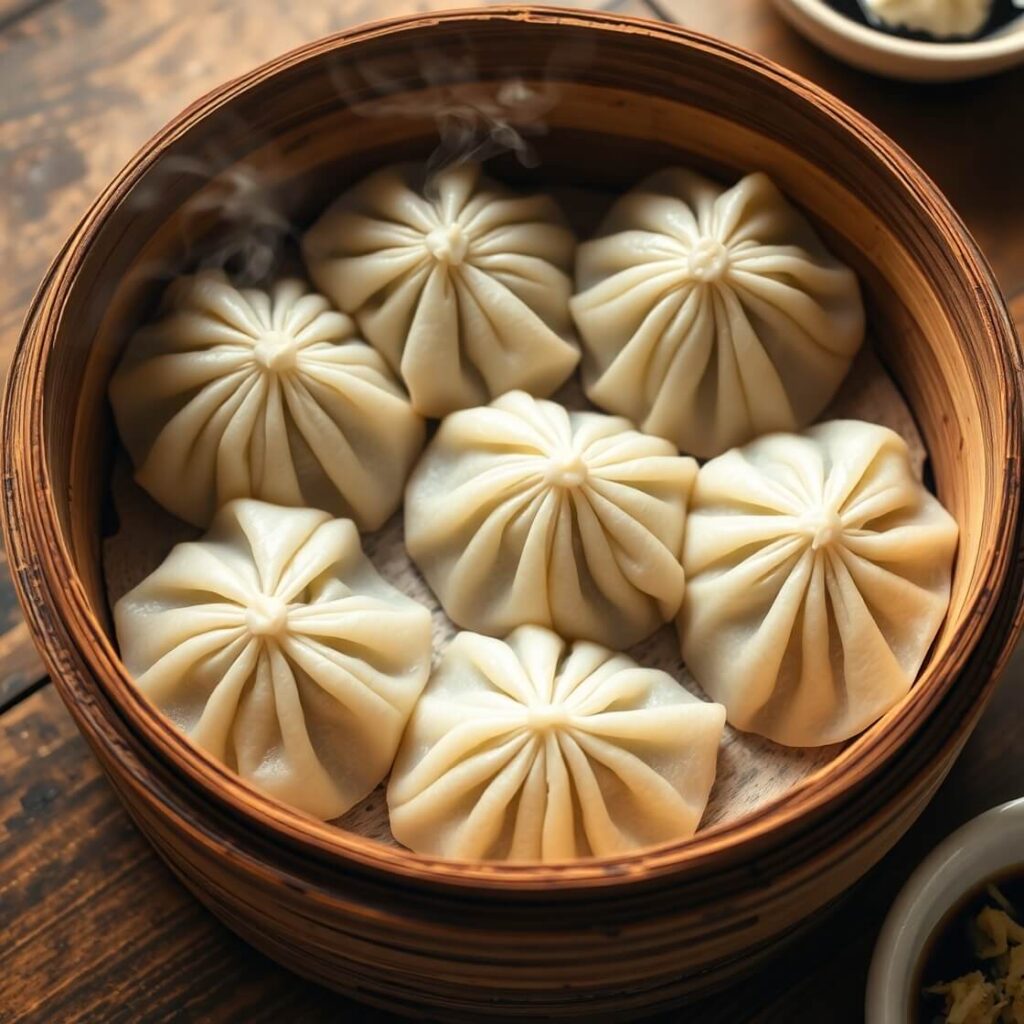
Cooking peach dumplings is as much about rhythm as it is about measurement. Here’s my method, shared as if we were cooking together in the kitchen:
- Prepare the Peaches: Peel and pit the peaches, then slice each into wedges. Aim for uniform thickness so they cook evenly.
- Make the Dough: Combine flour, a pinch of salt, a little sugar, butter, and milk until the dough comes together. Knead briefly on a floured surface—resist the urge to overwork it.
- Wrap the Peaches: Cut the dough into small squares and place a peach slice in the center of each. Fold the dough around the peach and pinch the edges to seal.
- Prepare the Syrup: In a shallow pan, melt butter and sugar together. Add cinnamon and a splash of vanilla extract. Once the sugar dissolves, bring to a gentle simmer.
- Cook the Dumplings: Gently place the wrapped peaches in the simmering syrup. Cover and cook on low heat for about 15–20 minutes, turning occasionally so they soak evenly.
- Check for Tenderness: The dumplings are ready when the dough is soft and slightly translucent, and the peaches are tender but not falling apart.
- Serve Warm: Ladle the syrup over the dumplings and enjoy immediately, perhaps with a scoop of vanilla ice cream or a dollop of whipped cream.
Substitutions and Adaptations
Peach dumplings are forgiving and versatile. I often adapt the recipe for dietary needs or seasonal preferences:
- Vegan: Replace butter with coconut oil and use plant-based milk in the dough.
- Gluten-Free: Use a 1:1 gluten-free flour blend and be gentle with kneading.
- Kid-Friendly: Skip the cinnamon if kids prefer a milder flavor, or drizzle with honey instead of syrup for natural sweetness.
- Seasonal Twist: Swap peaches with apricots or nectarines for late summer variations. Even sliced apples with a sprinkle of cinnamon can work in a pinch.
These adjustments let you keep the essence of the recipe while tailoring it to taste, season, or dietary needs.
Pairing Ideas for a Memorable Dessert
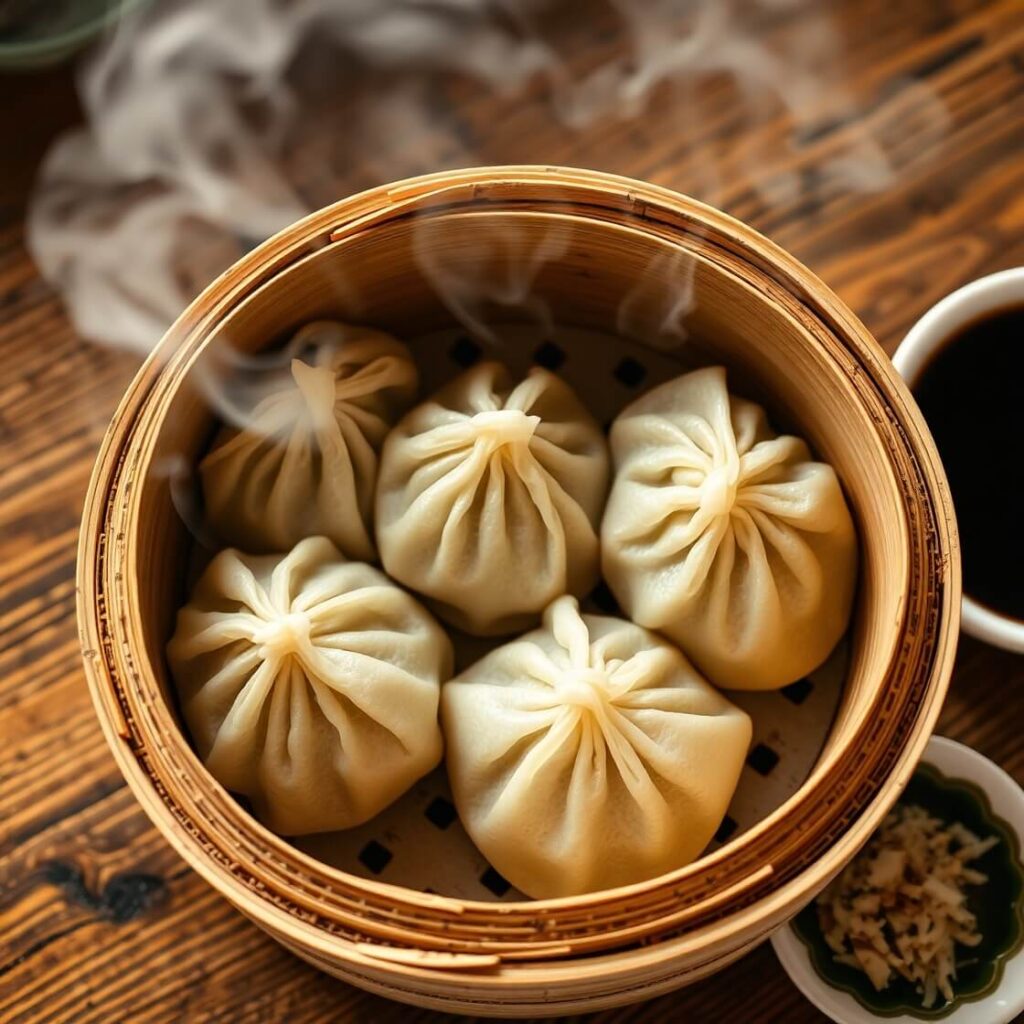
One of the joys of peach dumplings is how versatile they are when it comes to presentation. I love to serve them in a shallow bowl, spooning the warm syrup over the top. A scoop of vanilla ice cream or lightly whipped cream adds contrast and elevates the experience.
For a brunch or afternoon tea, they pair beautifully with lightly toasted nuts or a sprinkle of powdered sugar. I once added a small mint leaf for a pop of color—my kids immediately called them “fancy peaches.” Simple touches like these make a humble dessert feel celebratory.
Even just on their own, served warm straight from the pan, peach dumplings bring comfort and nostalgia to the table. The syrup pools like golden sunshine around each dumpling, inviting everyone to dig in.
Pro Tips and Kitchen Lessons
Even after years of making peach dumplings, I’ve learned there are a few tricks that can make the difference between “good” and “memorable.”
One tip is to let the dough rest briefly after making it. About 10–15 minutes allows the gluten to relax, which results in a tender, pillowy wrap that doesn’t shrink during cooking. I learned this the hard way—my first batch came out tight and tough because I rushed straight to wrapping the peaches.
Another lesson involves simmering gently. High heat can break the dumplings apart or overcook the fruit. Low and slow is your friend here. You’ll notice the syrup thickens slightly and clings to the dumplings—a good visual cue that they’re nearing perfection.
If you’re worried about the syrup being too sweet, try adding a splash of lemon juice. It balances the sugar and enhances the peaches’ natural flavor. I discovered this one summer when I accidentally grabbed extra sugar at the market—the tangy hint of lemon saved the batch and has been a favorite tweak ever since.
Finally, a little butter goes a long way. Just a tablespoon in the syrup helps create that golden, glossy finish on your dumplings. Skip it, and you’ll still have tasty peaches—but the visual “wow factor” won’t be there.
Common Mistakes to Avoid
Even seasoned bakers can stumble when making peach dumplings, so here’s a quick list of pitfalls I’ve seen (or caused!) firsthand:
- Overfilling the dumplings: Peaches release juice as they cook. Too much filling can burst the dough. Keep slices moderate and evenly sized.
- Using underripe or overly soft peaches: Unripe peaches won’t release enough juice and can taste bland; overripe peaches may turn to mush.
- Boiling instead of simmering: High heat ruins the dough texture. Gentle simmering is key.
- Skipping the resting time for dough: Dough that isn’t rested tends to shrink and can feel dense.
Each of these mistakes taught me patience and attention to detail—skills that not only improve dumplings but also make cooking more enjoyable overall.
Storage and Make-Ahead Tips
Peach dumplings are best served warm, but sometimes you’ll want to prepare ahead. Here’s how I handle it:
- Refrigeration: Store cooled dumplings in an airtight container with some syrup. They’ll keep for up to 3 days. Reheat gently in a saucepan over low heat or in the microwave with a splash of syrup to prevent drying.
- Freezing: Wrap individual dumplings in plastic wrap and freeze on a tray. Transfer to a freezer-safe bag once solid. Reheat in a low oven or simmer gently in syrup. This works best for small batches—you’ll want to avoid overcooking when reheating.
- Make-Ahead Dough: You can prepare the dough a day in advance, wrapped tightly in plastic wrap, and refrigerate. Bring to room temperature before wrapping peaches.
These tips make peach dumplings a flexible dessert for gatherings or last-minute treats.
Frequently Asked Questions
Can I use canned peaches instead of fresh?
Fresh is best for flavor and texture, but in a pinch, firm canned peaches work. Drain them well and reduce cooking time slightly to avoid mushiness.
Can I make these vegan?
Absolutely. Swap butter with coconut oil or plant-based margarine and use almond or oat milk for the dough. The syrup can also be vegan-friendly with the same adjustments.
How can I tell when the dumplings are done?
The dough should look soft and slightly translucent. A fork should pierce it easily, and the peach should be tender but still hold its shape.
Can I freeze fully cooked dumplings?
Yes, but I recommend freezing before cooking for better texture. If freezing after cooking, reheat gently and avoid overcooking.
What’s a good topping?
Vanilla ice cream, lightly whipped cream, or a sprinkle of toasted almonds all enhance the flavor. A drizzle of extra syrup never hurts either.

Soup Dumplings
- Total Time: 4 hours
- Yield: 30 1x
- Diet: Halal
Description
Discover the ultimate comfort food with these delicate, juicy soup dumplings — filled with seasoned pork and a burst of hot, savory broth. These little parcels of joy are handcrafted with a rich pork gelatin that melts as they steam, creating an explosion of flavor in every bite. Perfect for special dinners or weekend cooking projects, this recipe walks you through every step — from making the soup to shaping the dumplings. Get ready to impress friends and family with your dim sum skills, no restaurant required.
Ingredients
1. For Soup Gelatin:
- 1 lb pork bones
- 6 cups water
- 1-inch fresh ginger
- 2 scallions
- 1 tbsp Shaoxing wine
- ½ tsp salt
- ¼ tsp white pepper
- 1 tbsp unflavored gelatin (optional)
2. For Filling:
- 1 lb ground pork (20% fat)
- 1 tbsp soy sauce
- 1 tbsp Shaoxing wine
- 1 tsp sesame oil
- ½ tsp sugar
- ½ tsp salt
- ¼ tsp white pepper
- 1 tbsp grated ginger
- 1 tbsp chopped scallions
- 2 tsp cornstarch
3 .For Wrappers:
- 2 cups all-purpose flour
- ¾ cup hot water
- Cornstarch for dusting
Instructions
- Simmer pork bones, ginger, scallions, and seasonings to create a flavorful broth. Strain and chill until set.
- Mix the filling ingredients. Dice gelatin and fold into meat mixture. Keep chilled.
- Make the dough by mixing flour and hot water. Knead until smooth and let rest.
- Divide and roll dough into small circles with thinner edges.
- Add filling and pleat wrappers to seal. Place on parchment or cabbage leaves.
- Steam for 8–10 minutes over high heat. Serve hot with vinegar and ginger.
Notes
- Use fatty pork for juicy filling.
- Keep all components cold to maintain dumpling structure.
- Pleat gently — avoid pressing too hard or soup will leak.
- Freeze uncooked dumplings for quick future meals.
- Prep Time: 2 hours
- Cook Time: 10 minutes per batch
- Category: Appetizer / Main Dish
- Method: Steaming
- Cuisine: Chinese
Nutrition
- Serving Size: 30
- Calories: 80
- Sugar: 0.3g
- Sodium: 160mg
- Fat: 5g
- Saturated Fat: 1.5g
- Unsaturated Fat: 3g
- Trans Fat: 0g
- Carbohydrates: 6g
- Fiber: 0.3g
- Protein: 4g
- Cholesterol: 12mg

